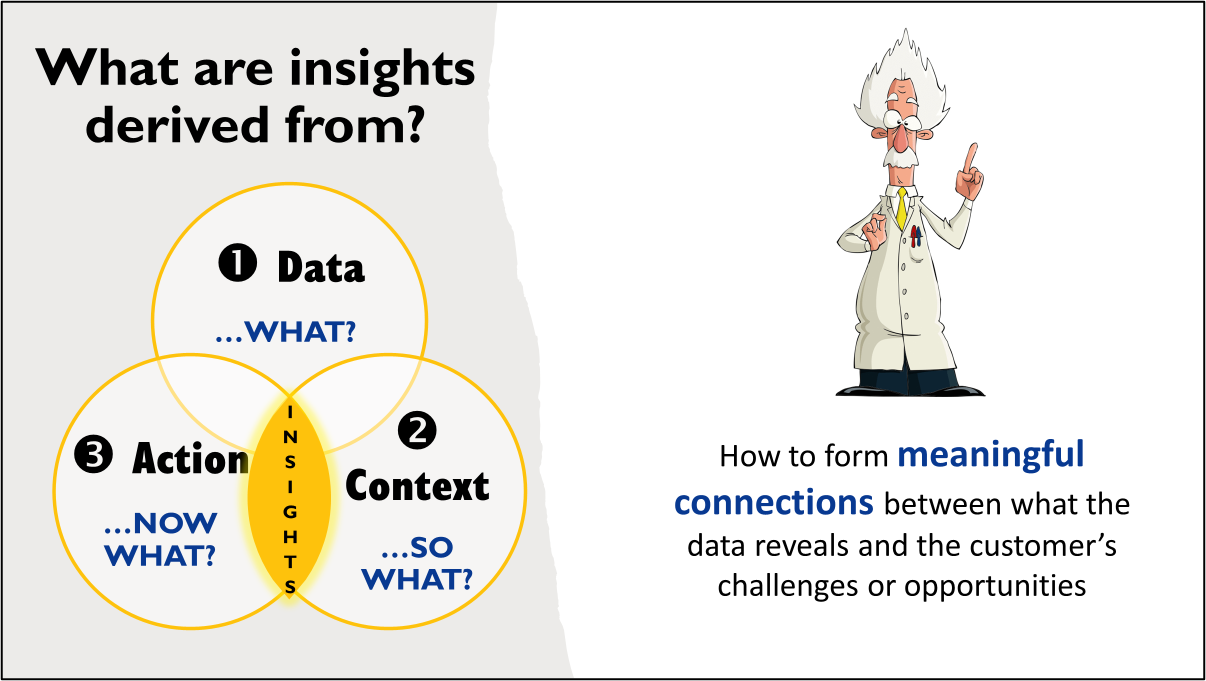Data analysis is an essential skill in today's data-driven world. It's not just about collecting massive amounts of data; it's about extracting meaningful insights from it to drive action. In this blog, we will delve into the process of transforming data into valuable insights, demystifying the steps involved and providing practical tips along the way.
Understanding Insights
Insights are like beacons of light amidst a sea of data. They are valuable knowledge that is gained by understanding information in its proper context and applying actionable meaning to it. Imagine a puzzle made up of data pieces; insights are the beautiful picture that emerges when you fit them together.
Context is the secret ingredient in the recipe for generating insights.
Data without context is like a riddle without a clue - it lacks meaning. To provide valuable insights, it is crucial to consider your audience and the questions driving your analysis. The better you understand the context, the more impactful your insights will be.
Creating the right context can be challenging. Here are some activities that can help you gain perspective:
- Compare your data to relevant benchmarks or historical data (check out my previous blog on using the "Index" calculation).
- Enrich your data by incorporating insights across multiple data sources (click here to learn about data sources across the retail supply chain).
- Practice contextualizing data through real-world scenarios and activities.
Steps to Move From Data to Insights
1. Set Clear Goals
To embark on the journey from data to insights, it is essential to set clear goals. Avoid diving into data blindly; instead, define what you want to achieve through your analysis. This ensures that you don't get lost in a sea of information without direction.
There are two effective approaches to setting goals:
- - Hypotheses: Formulate hypotheses and use data to test them. Ask yourself, "What business problem am I trying to solve?"
- - Key Questions: Identify important and measurable questions that are directly related to your business problem.
2. Source Relevant Data
Not all data is created equal. To meet your goals and answer your questions, it is crucial to source relevant data. Think of it as collecting puzzle pieces that fit your overall picture. Ensure that the data aligns with your objectives and meets the understanding of your audience, and look across multiple data sources where possible.

3. Analyze the Data
Understanding how to approach and interpret data is vital. Start with an overview, examine industry trends, understand the perspective of your target audience, and analyze retailer results. It's like starting with the big picture before zooming in on the specifics.
4. Explore and Uncover Insights
Once you have the right data, embark on the exploratory phase. Think of it as a thrilling treasure hunt. Your analytical mindset is the flashlight, and your goal is to discover the most compelling and important points. Let the data tell its story instead of forcing it into preconceived narratives.
As you sift through the data, look for patterns and relationships among data points.
This is where insights start to take shape. Insights enable you to make strategic decisions that can drive your business forward.
Illustrative Examples
To better understand the difference between a mere data point and a valuable insight, consider these two examples:
Example 1:
Category sales are down -$223 million (-13%) in retail. Penetration is down 2.1 points (so -2.1% of total households purchased the category). Average category price has declined $1 and $1.71 in 12 and 3 months respectively. Value brands like All Other and Private Label are declining at much lower rates in $ sales and unit sales (-4% and +0.8%) with average prices of $5.00 and $6.00.
Example 2:
Retail has experienced a significant decline of over $220 million in category sales due to a decrease in households purchasing the category and the rise of value brands with products below $10. This presents an opportunity to explore price gaps and gain insights into consumer preferences for informed decision-making and driving growth.
Which one do you think provides a better insight? Why? (Take a moment to reflect on it, then read on).
Example 1 includes important FINDINGS (patterns collected in the data) but doesn’t capture context or action. Example 2 includes important observations, context and action. A good example of an insight.
In the end, turning data into insights is a blend of science and art. It requires a keen eye, a curious mind, and the willingness to let the data guide you. Remember, insights are the keys that unlock your data's potential, enabling you to make informed decisions and drive success. So, as you embark on your journey from data to insights, equip yourself with the right tools and mindset, and let the adventure begin.
Is your team facing challenges in transforming data into valuable insights?
I offer personalized virtual training sessions that are tailored to your team's needs. These hands-on sessions utilize real examples from your data and categories to enhance understanding. Feel free to reach out to me for further information and details!
Happy learning! Sue


